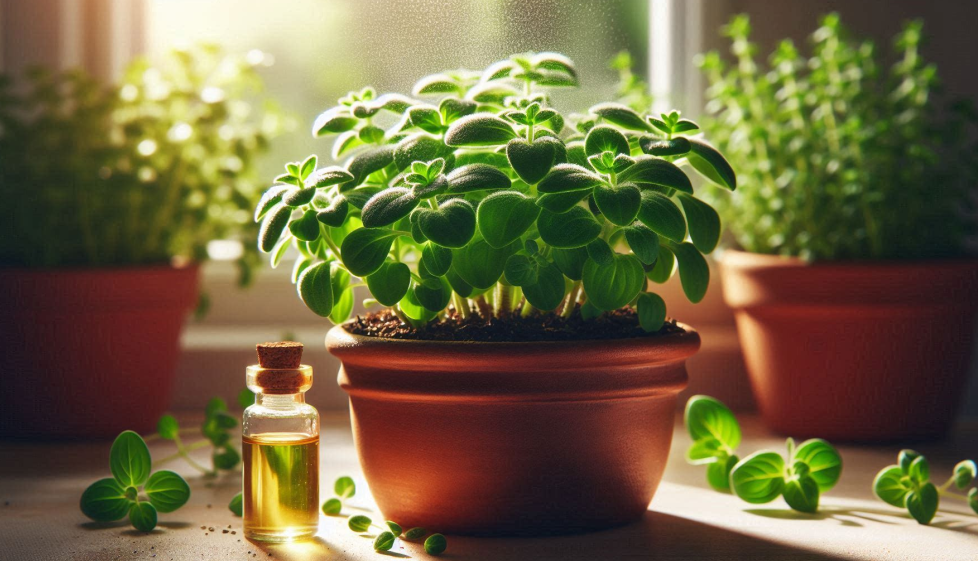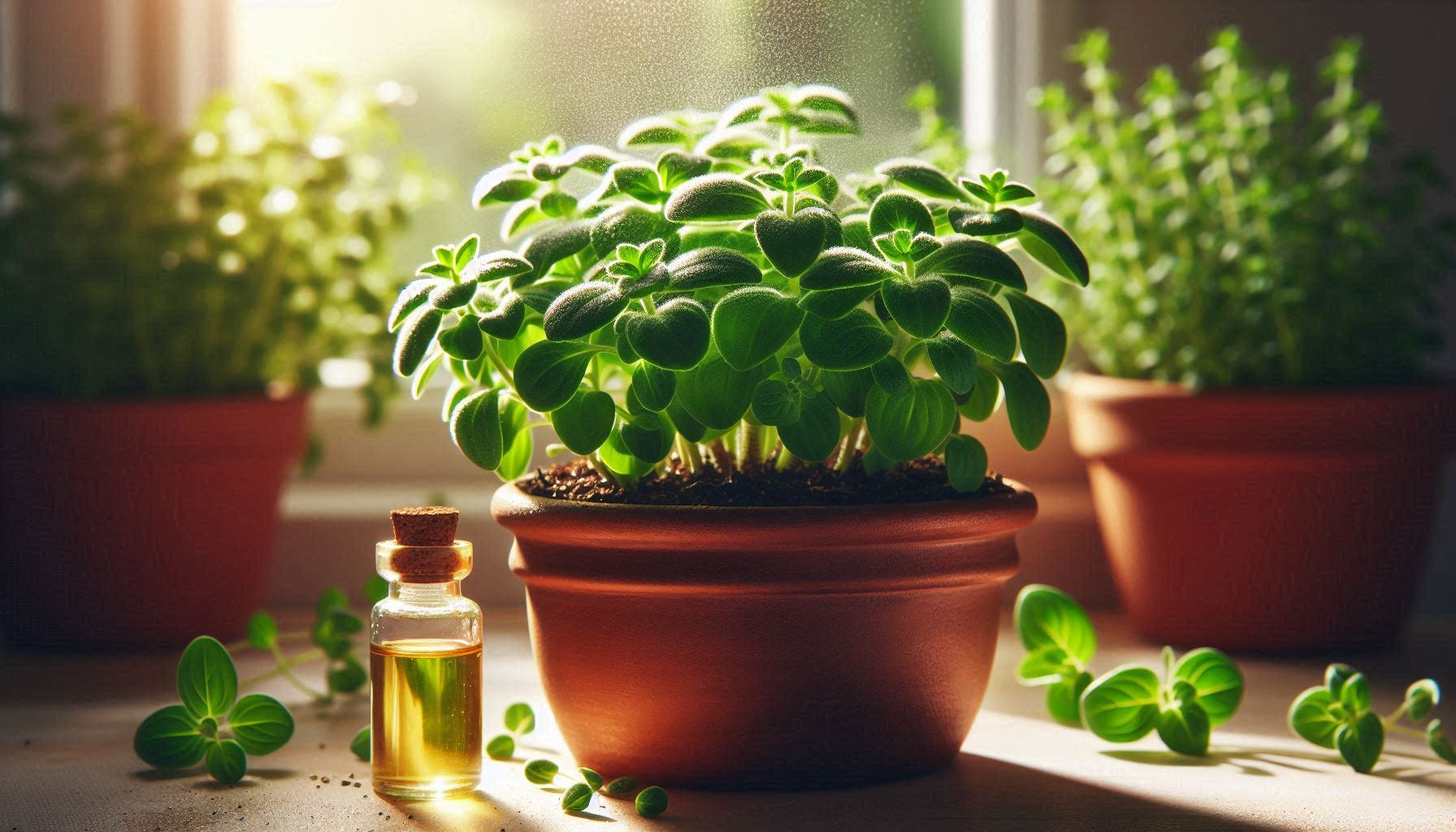
I appreciate the aroma of oregano as much as anyone who loves a good meal. This herb isn’t just a flavour enhancer used in pizzas and pasta sauces; it’s a storied plant with a lot more to offer than its delightful taste. In this article, I’ll introduce you to the world of oregano, highlighting not only its culinary uses but also peeking into what makes it a subject of interest for health enthusiasts.
You might be curious about what’s really in that sprinkle of oregano that goes into your favorite dishes. Well, beyond its capacity to provide a robust flavour profile, oregano is composed of a complex mix of compounds that have captured the attention of the medical research community. I’ll talk about oregano’s active ingredients, including essential oils and antioxidants, which play a significant role in its health benefits.
Many of you are seeking natural ways to enhance your health and well-being, and being aware of what we consume is integral to this process. Oregano offers an interesting case study because it can potentially offer more than just taste. So, let’s move forward with a sharper focus on the potent compounds in oregano and what they mean for your health, setting the stage for a closer examination in the next section.
Peering into the Leaves: The Chemical Profile of Oregano
Oregano isn’t just another herb on the spice rack; it’s a complex botanical bursting with a unique chemical makeup that has captured the interest of culinary enthusiasts and scientists alike. When I delve into what makes oregano special, I find a variety of active compounds that contribute not just to its distinct flavour but also to its potential health benefits.
Essential oils are the heart of oregano’s chemical identity. Among them, thymol and carvacrol are stars for their strong antimicrobial properties. These compounds give oregano that familiar robust, earthy aroma and are also thought to be behind some of the herb’s purported therapeutic effects. Furthermore, terpenes, such as pinene and limonene, add to its complex profile, offering their own unique benefits.
But it’s not all about flavour and aroma. Oregano is also modestly rich in vitamins and minerals. Vitamins A, C, E, and K are present, alongside minerals like iron, manganese, and calcium, making it a nutritious addition to meals. In terms of fiber, oregano provides a decent amount, which is good news for those looking to boost their daily intake.
Perhaps one of the most impressive attributes of oregano is its antioxidant content. Rosmarinic acid and quercetin are two antioxidants found in abundance in the leaves of this plant. These compounds help combat free radical damage, which plays a role in aging and various diseases. The antioxidant capacity of oregano is significant enough that it’s often cited as one of the herbs with the highest antioxidant activity, which could help explain some of its health-promoting properties.
With this understanding of oregano’s chemical profile, we’re in a better position to explore what medical research says about its effectiveness. The next section will unravel the science-backed benefits of oregano and how they might translate to better health outcomes.
The Healing Properties of Oregano: Decoding Medical Research
Medical research sheds light on just how powerful oregano can be beyond the kitchen. Its reputed healing properties are not mere folklore; there’s science to back them up.
When you hear about oregano’s antimicrobial properties, know that scientists attribute this to its compounds like carvacrol and thymol. These substances have been shown to inhibit the growth of bacteria, such as E. coli and Listeria, and even some fungi and viruses. This characteristic makes oregano an interesting focus of study, especially when antibiotic resistance is a rising global concern.
Oregano also boasts anti-inflammatory properties. Research suggests that it might help in reducing inflammation, which is beneficial because chronic inflammation is a factor in various diseases, from arthritis to heart ailments. Additionally, the antioxidants present in oregano, such as rosmarinic acid, provide a defense mechanism against free radicals, which are unstable atoms that can damage cells, leading to illness and aging.
While these findings are promising, it’s important to remember that many studies use concentrations of oregano compounds that are higher than what one might consume in food. Thus, oregano should be seen as a complement to, not a substitute for, conventional medical treatments.
Take these insights with a grain of salt, recognizing the road from initial research to clinical practice is a long one. Consult with a healthcare professional to understand how these properties of oregano can be best utilized in optimizing your health.
Next, I’ll guide you through various methods to introduce oregano into your diet. We’ll look at not only how to boost your meals but also how to potentially enrich your health regimen with this versatile herb.
Practical Uses and Tips: Integrating Oregano into Your Diet
Oregano isn’t just for sprinkling on pizza or pasta. This versatile herb can be a flavourful addition to a variety of dishes, and when used correctly, it can also contribute to your overall well-being.
Quantity matters when it comes to herbs. A sprinkle here and there can give a flavour boost without overwhelming the palate. With oregano, the key is to start with small amounts and adjust according to taste and the specific health benefits you’re aiming for.
Turning to oregano tea can be a soothing way to enjoy its benefits, especially if you’re aiming to calm an upset stomach or soothe a sore throat. Capsules and essential oils offer more concentrated forms of oregano’s active compounds, which can be convenient, but they must be used judiciously.
The fresh vs dried debate is often a matter of preference, but it’s worth noting that fresh oregano has a milder flavour and may require a larger quantity to match the taste intensity of its dried counterpart. Conversely, dried oregano is more potent, packed with flavor, and can be stored for longer periods.
When incorporating oregano into your diet, consider the meal’s overall flavor profile. Oregano pairs well with tomato-based dishes but can also bring an earthy depth to meats and vegetables. As an herb, its versatility allows for experimentation, so don’t be afraid to try it in new recipes or tea blends.
Precautions and Warnings: Responsible Use of Oregano
I want to ensure that you approach oregano with the respect it deserves – as a powerhouse spice with potential health benefits, but also as one that requires caution. Not everyone should use oregano in medicinal amounts, and there could be side effects or drug interactions to consider.
If you’re expecting, have a chronic health condition, or take regular medication, I strongly advise discussing oregano with your doctor first. It’s critical to be mindful of how oregano’s potent properties interact with your body and existing treatments.
Pay attention to how your body reacts to oregano. While it’s rare, some people do experience allergic reactions to herbs, including oregano. Symptoms to watch for include rash, itchiness, or difficulty breathing, which would require immediate medical attention.
Remember, oregano is a complement, not a substitute, for medical advice or treatment. Treat it as a flavourful addition to your meals and potentially beneficial supplement, but don’t rely on it as a primary healing tool.
Stay informed, engage with healthcare professionals, and always prioritize safety when incorporating any new element into your health regimen. In responsible doses, oregano can be a wonderful herb to enjoy for both its flavour and health benefits.

